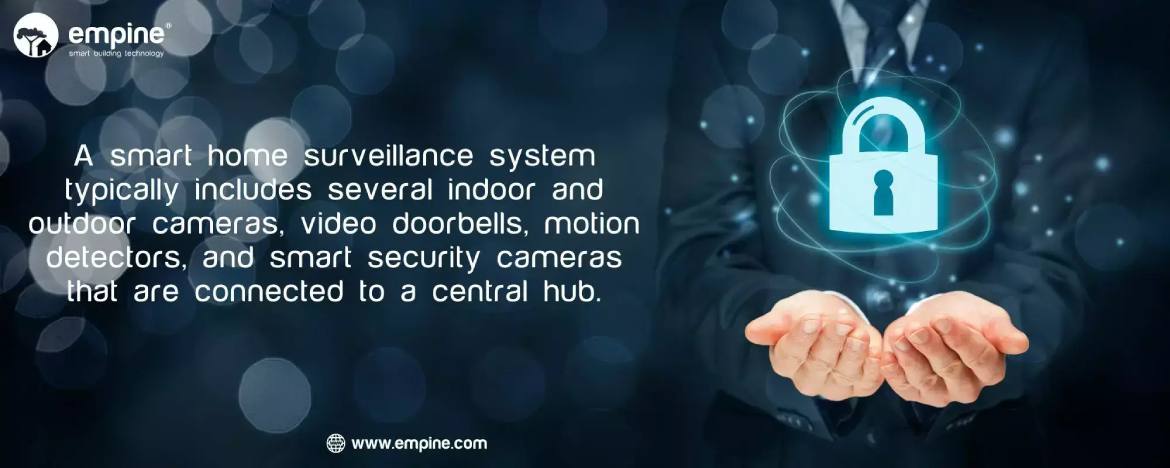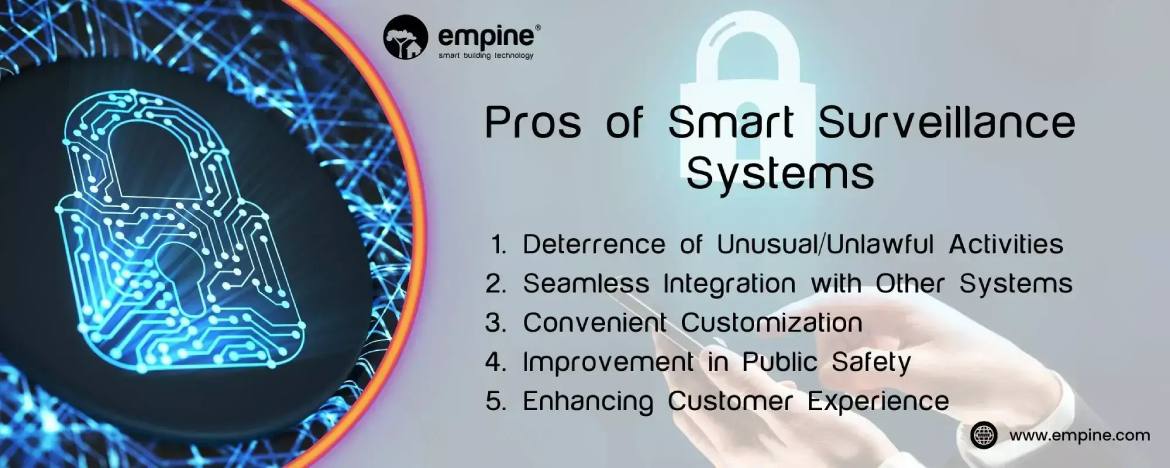We all know that the world is a scary place. There are so many things out there that can hurt us, and the dangers seem to worsen every day. So, it’s no wonder many people are turning to smart surveillance systems to help keep them safe.
When you think of a surveillance system, what comes to mind? Do you envision a complex and expensive security measure used by the government or businesses? The reality is that surveillance systems can be much more straightforward and more affordable than you may think.
In fact, many homeowners are turning to smart home technology to create their very own surveillance systems. But you may not know that these systems come with their own pros and cons.
Here, we’ll look at some of the most important ones. Let’s go.
What is Smart Security & Surveillance System - Here’s What You Should Know
Home security used to be pretty simple. You might have had a few locks on your doors and windows and maybe even an alarm system. But in this internet age, home security has become a lot more complex.
Now there are energy management solutions that can help you save money on your utility bills, and there are also systems that can automatically unlock your doors when you get home.
So what exactly is a smart surveillance system?
A smart home surveillance system typically includes several indoor and outdoor cameras, video doorbells, motion detectors, and smart security cameras that are connected to a central hub, which can be accessed by the homeowner using a mobile app.
The cameras can be used to monitor activity both inside and outside the home, and the system can be set up to send alerts to the homeowner if there is any suspicious or unusual activity.
The cameras are usually night vision, and Wi-Fi enabled and can be controlled via voice commands with smart assistants such as Google Home or Amazon Echo. Some smart home security cameras also have built-in sirens that can be triggered remotely in case of an emergency.
Most smart home security systems offer cloud storage for footage, so the footage will still be available even if the physical devices are destroyed.
In addition to providing peace of mind, smart home security systems can also help to deter burglars and other criminals. More advanced smart home security systems come with facial recognition technology and RFID solutions.
Smart home security sometimes also includes energy management solutions that allow homeowners to remotely monitor and control their homes via a mobile app or web-based interface. Homeowners can save energy, money, and time by connecting energy-consuming devices like thermostats, door locks, and lighting equipment to the internet.
As the technology continues to evolve, these IoT-based smart home security and surveillance systems are becoming increasingly affordable and reliable, making them an attractive option for homeowners looking for an effective way to protect their property.

Pros & Cons of Smart Surveillance Systems
These systems use state-of-the-art technology to keep your home safe, offering many benefits over traditional security systems.
But are they right for you?
Pros of Smart Surveillance Systems
The benefits of smart surveillance systems outnumber the drawbacks by a huge margin. Let’s go through them briefly.
1. Deterrence of Unusual/Unlawful Activities
Perhaps the most obvious benefit is that it can deter crime. If potential criminals know that their every move is being monitored, they are less likely to commit a crime.
In addition, smart surveillance systems can also help to identify and apprehend criminals. If a crime does occur, footage from the surveillance system can be used to identify the perpetrator.
Smart surveillance systems are much more difficult to defeat. They can be programmed to recognize patterns and track movements, making it easy to identify potential threats.
2. Seamless Integration with Other Systems
Additionally, smart surveillance systems can be integrated with other security systems, such as alarm systems and access control systems. This allows for a more comprehensive approach to security, making it more difficult for criminals to slip through the cracks.
3. Convenient Customization to Meet Demands
Smart surveillance systems can be customized to meet any organization’s specific needs. This means that they can be tailored to the specific security concerns of that organization, making them much more effective at deterring crime or helping to avoid/assist in certain situations.
4. Improvement in Public Safety
Furthermore, smart surveillance systems can help to improve public safety. For example, emergency services can be dispatched quickly based on feedback from smart surveillance if there is an accident or a fire.
5. Avoiding Traffic Congestions
Additionally, smart surveillance systems can be used to monitor traffic patterns and identify congestion hotspots. This can help to improve traffic flow and reduce congestion by directing the traffic away from such spots.
6. Enhancing Customer Experience
Finally, smart surveillance systems can improve customer service. Businesses can make changes to improve the customer experience by monitoring customer behavior.

Cons of Smart Surveillance Systems
Before installing a smart surveillance system, it is important to weigh the pros and cons carefully.
While these systems can offer some benefits, they also come with several significant risks that you should not ignore.
1. Privacy & Data Security Concerns
One of the key concerns is privacy. Smart surveillance systems collect a lot of data, including video footage and audio recordings. This data could potentially be used to track individuals or build up a detailed picture of their daily activities.
There is also a risk that smart surveillance systems could be hacked, allowing unauthorized access to this sensitive data.
2. High Capital & Operational Cost
Another concern is cost. Smart surveillance systems are often costly and require a high level of maintenance. This means that only wealthy organizations or homeowners are likely to be able to afford them.
3. Self-Censorship & Lack of Creativity
Here’s a drawback that’s highly likely to be overlooked by many but is important nonetheless.
Smart surveillance systems in public places or organizations could have a chilling effect on our society. If we know that we are being constantly monitored, we may be less likely to speak out against injustices or behave in ways that are outside the norm.
This could lead to a stifling of creativity and innovation, as people self-censor in order to avoid drawing attention to themselves.
Conclusion
Smart surveillance systems are becoming increasingly popular for both personal and business use. They offer several benefits, including safety, security, and convenience. However, they also have some drawbacks that should be considered before making a purchase decision.
Ultimately, the pros and cons of smart surveillance systems depend on your individual needs and preferences.
So, what’s right for you? Do you think a smart surveillance system is right for you? If so, which one should you buy? Check out our security products to find the best system for your needs.